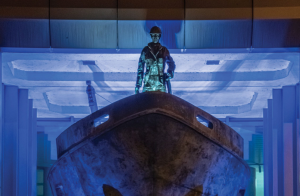The biggest issue for ballast water treatment technology at the moment is the acceptance or otherwise by the USCG of VIDA and a change to its test protocol. The change would open the door to a wider range of manufacturers and models that could achieve USCG type-approvals – a significant marketing tool and a boost to sales
33 USCG type-approved BWMS by the end of 2020
In 2019, nine ballast water treatment systems were granted USCG type-approved status, bring the total number of USCG type-approved systems to 23 BWMS.
USCG VIDA draft policy letter blues
The USCG’s response to VIDA and its draft policy letter has been one of the biggest disappointments in 2019. It was widely accepted and expected this letter would create the conditions for the alignment of IMO testing procedures and those of the USCG. The overwhelmingly negative response of industry stakeholders suggests the USCG needs to be more willing to take on board what seems to be globally accepted science. This is unlikely to happen as this is a highly unusual situation of a military institution controlling a commercial decision. The Ballast Water Treatment Technology prediction for the outcome is that there will be no change in the attitude of the USCG in 2020.
Expansion of biological testing on commissioning
Singapore’s administration now requires that a BWMS installed on a ship meets the D-2 discharge standard, which requires biological testing by sampling. As SGS’ marine services regional business development manager, Guillaume Drillet said during the Riviera/De Nora Ballast Water Treatment webinar Beyond Certification, this is not a difficult task for testing laboratories. However, it will be another cost for the shipowner. Bahamas administration and Panama administration have also indicated they will be early movers on a rule that does not take effect until 3 October 2021 under Regulation E-1 of the Ballast Water Management Convention. It is likely that other maritime administrations will join this group during 2020.
New entrants into the ballast water treatment technology market
Ballast Water Treatment Technology is aware of a new methodology currently undergoing trials at university level. It is a new variation on currently available technology. More will be revealed in the 2020 Ballast Water Treatment Technology supplement.
Push back on shipboard treatment of ballast water
More than once on my travels to various shipping trade forums and exhibitions I have been told by shipowners and operators that IMO completely failed to grasp the operational difficulties that lie behind marinisation of shoreside technology. Many shipowners have told me IMO should not have listened to ’experts’ but insisted responsibility for ballast water treatment be a port issue. IMO should have legislated for ports to provide facilities for treating ballast water, which would have been conducted on shore using readily available and proven water treatment technology. Shoreside treatment was proposed again at MEPC 74 when Nigeria presented a paper for treating ballast water in port for tankers that form part of a bilateral service. Could 2020 be the year this idea moves further forward in IMO?



